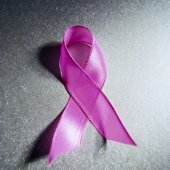
WEDNESDAY, Oct. 6 (HealthDay News) — The rules used to be simple.
Starting at age 40, a woman would have a mammogram every year, a screening strategy intended to detect breast cancer in its earliest stages.
But nearly a year ago, that simple guideline received a severe shake-up by a federal panel tasked with determining the best, most cost-effective ways to provide preventive care.
The U.S. Preventive Services Task Force released breast cancer screening recommendations in November, calling for routine mammography for breast cancer to begin a decade later — at age 50. The task force added that mammography should be done only every other year, rather than annually.
The dust is still settling from the release of those recommendations.
Major medical organizations and advocacy groups — the American Cancer Society, the American Congress of Obstetricians and Gynecologists, the Susan G. Komen for the Cure breast cancer foundation — have refused to recognize the task force guidelines and continue to recommend that women start receiving mammograms at age 40.
Three other groups — the American College of Radiology, the Society of Breast Imaging and the American Society of Breast Disease — launched a campaign in September to encourage women to have an annual mammogram starting at age 40.
And in recent weeks, one new study reported that routine mammograms for women in their 40s lower the risk for dying from breast cancer, but another found that routine mammograms accounted for only about one-third of the decline in breast cancer death rates seen recently.
But all of this has raised worries that women and doctors alike, confused by the cross talk between competing expert groups, might just throw up their hands when it comes to mammography, said Robert Smith, director of cancer screening for the American Cancer Society.
“It’s a very real concern,” Smith said. “I imagine that’s actually occurring for some women, and some women’s doctors.”
Even when the guidelines were clear, the U.S. Centers for Disease Control and Prevention found that just two of three women 40 years or older had a mammogram within the past two years.
And given the new confusion, Smith said, “we can conjecture there are some clinicians who will be less motivated to be attentive to screening in this age group due to the competing recommendations.”
The conflict could have dire implications for women’s health. Breast cancer affects one in eight women during their lifetime and kills more women in the United States than any cancer except lung cancer, according to the U.S. National Institutes of Health. Nearly 40,000 women are expected to die from breast cancer this year, and more than 207,000 new cases will be diagnosed.
It is too early to tell with solid data how the competing guidelines are affecting the decisions and judgment of women and their doctors, Smith said. But both sides have anecdotal evidence on how doctors are responding to the controversy.
A Web survey posted by the Annals of Internal Medicine, a medical journal, drew 651 respondents, about half of whom said they were physicians. Of the doctors who filled out the survey, two-thirds said that they would stop offering routine mammograms to women ages 40 to 49 and would tell women younger than 75 that they need to have a mammogram every two years instead of annually.
The journal’s editor, Dr. Christine Laine, said the survey’s findings should not be given a great deal of weight, noting that the people who most often participate in such online polls are the ones most passionately involved in a topic.
“The time frame has actually been too short to say whether there’s been an impact on practice yet,” Laine said. “You’re talking about a test where, even if it were to be done yearly, it’s too soon to have done it for some women.”
Laine said she has noticed anecdotal evidence that resistance to the task force’s recommendations seems to depend on which medical “camp” a physician falls within.
“Radiologists, who have a lot to lose if mammography is done less frequently, are quite discontent with the guidelines,” she said. On the other hand, primary care physicians seem to be more supportive of the task force’s recommendations and believe they are well-founded in hard science.
Smith said he can understand why doctors would be inclined to follow the new guidelines because many are overworked and hard-pressed for time. “Any opportunity to stop doing something is an opportunity they will embrace,” he said.
At the same time, he said, he’s seen circumstantial evidence of his own that many doctors will stick by the earlier guidelines.
Smith attended a recent meeting of the National Medical Association at which attendees were asked which guidelines they would follow. More than 90 percent said they would hold to the established guidelines promoted by the American Cancer Society, he said.
The Cancer Society, Smith said, believes that the task force failed to consider the broader impacts of the disease upon society in its conclusions, which were based on the finding that hundreds more women in their 40s, compared with the number of older women, must be invited to mammography screenings to prevent one death.
“If you have a disease that is a leading cause of death among women in their 40s and a leading cause of premature mortality,” Smith said, “even though you still need to invite more women to screen, it is still a good investment of health-care resources.”
The task force came to its recommendations using incomplete data that does not take into account the advances that have been made in modern mammography, he added.
“The technical quality of mammography has evolved over the years, as has the professional ability to analyze mammograms,” Smith said.
But modern mammography’s advances have improved diagnosis among older women, Laine responded.
“The modern techniques are not necessarily things that would be more helpful in younger women, and those are the women about whom this debate is occurring,” she said. “Those arguments are speculative because there isn’t data to say how successful the new techniques are in treating younger women.”
In the end, the task force’s recommendations took a hard look at the data and carefully balanced the risk of treating false positives and cancers that would not reduce life expectancy against the rewards of detecting breast cancer early in some women in their 40s, Laine said.
“The task force guidelines are not saying don’t do it,” Laine said. “They are saying don’t do it as a knee-jerk reaction because the risks and benefits are more nuanced in younger women. You should have a conversation with your younger patients about those risks and benefits. Which seems like something women should welcome.”
More information
The American Cancer Society has more about breast cancer.

